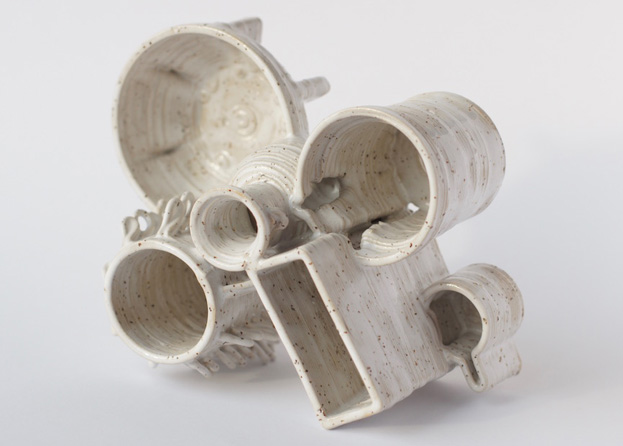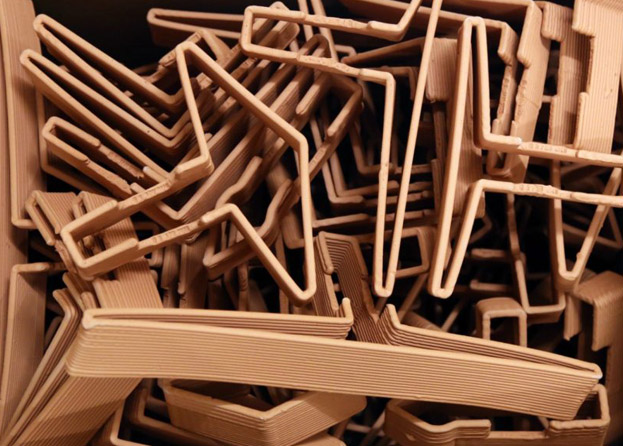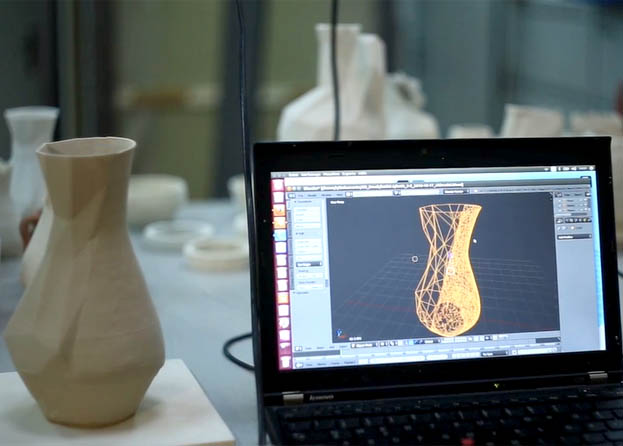From: steffenhartwig.de
Today 3D printers are omnipresent. But most of the time they are used to print objects that already exist and to force any material into any shape. That reminds of the arrival of new technologies in the past. When it became possible to build with cast iron in the end of the 19th century the architects hid the thin iron columns in a stone shell. It took a while until the new potentials of the material were used to build airy hall from iron and glass in a genuine new style. In the 20th century the first plastics were used to imitate natural horn and it took decades before products showed their plasticnes in bright colors.
This work tries to explore how to combine an analog material with this new process in an authentic way. The resulting artifacts fascinate because they neither feel completely handmade nor machinemade.
Can a machine make authentic things? Is there a border between analog and digital? Does digital unpredictability exist? That is the purpose of a thing? What is an original, what is a copy?
The hands-on work is accompanied by some texts that deal with topics and questions that emerged from the practical experiments. The first notes were seemingly independent fragments that were grouped just for logistic reasons in the first place. To force these multeities into one single book would be counterproductive and would impose an unwanted order and hierarchy to the chapters.
So the result is a collection of booklets that are independent and yet completely dependent on each other. Every chapter can be placed next to any other. The booklets have cross references to the others on their cover which can be obeyed or not. The text is accompanied by photographs of objects from the hands-on part of the projects. The whole book is framed by a ceramic slipcase from the experimental process. The red booklet is the introduction from which the reader can decide which way to go. There are no rules, one can start, stop or skip at any point.




